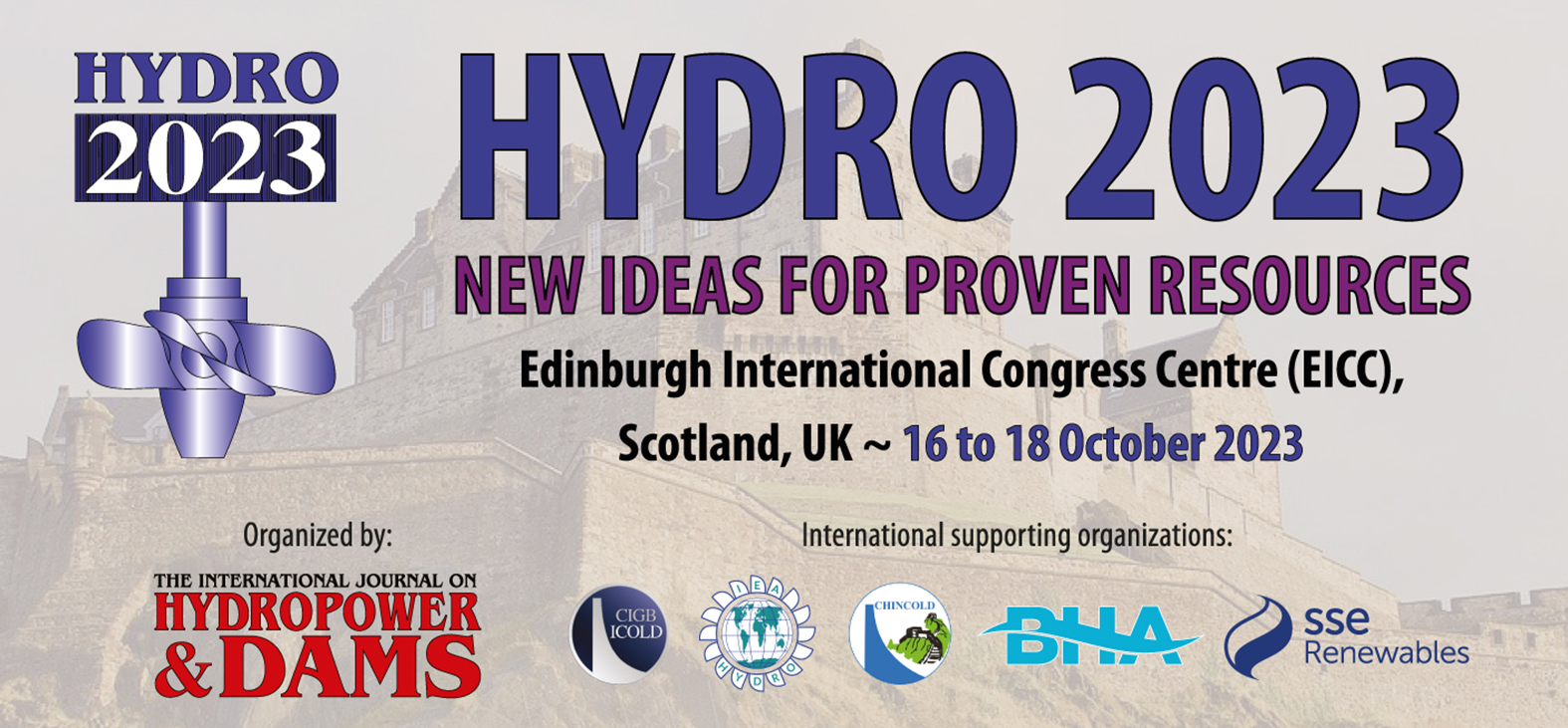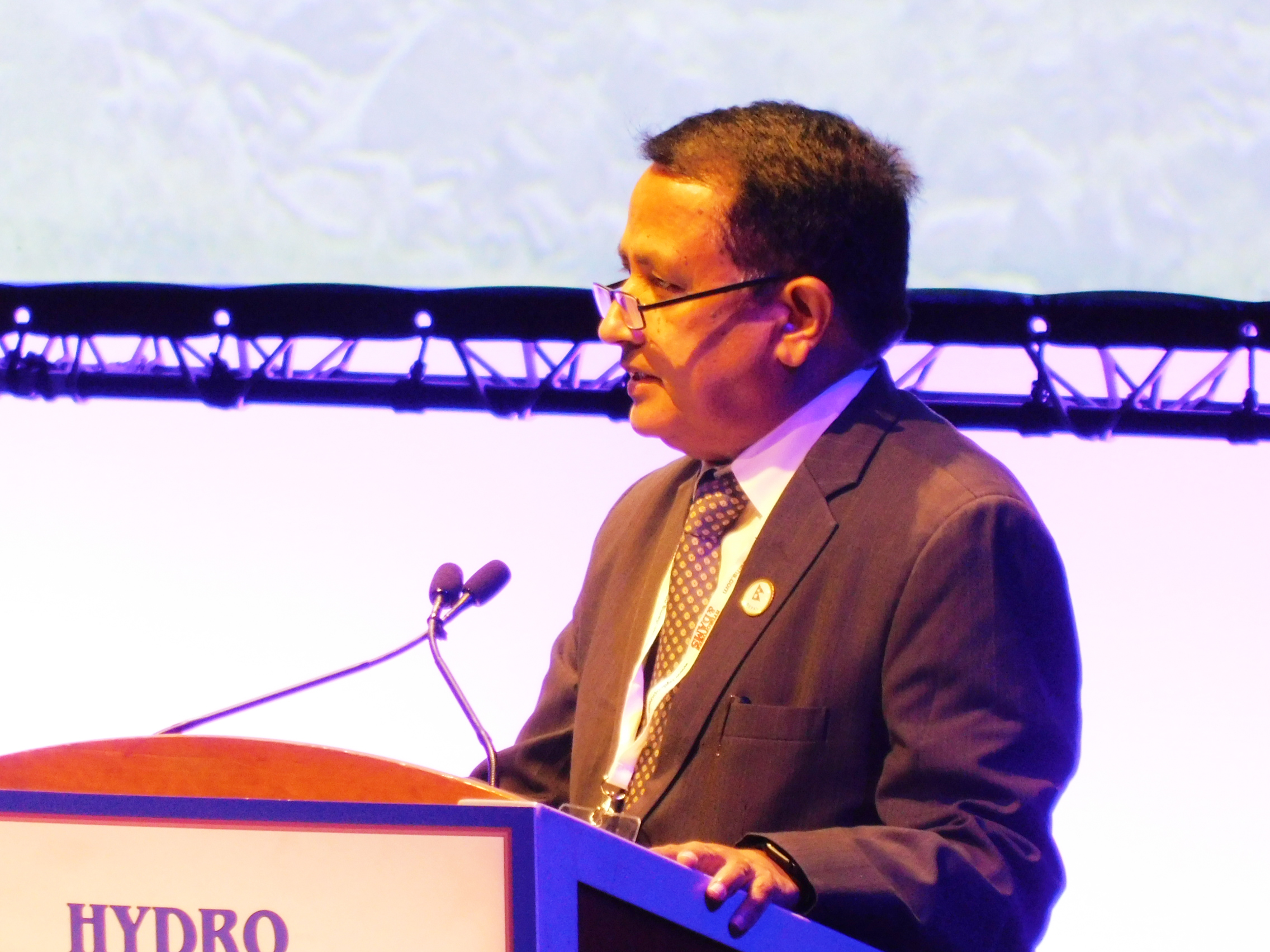


At the beginning of the opening plenary session on 16 October, international delegates had the feeling of arrival in Scotland listening to The Hebrides Overture (Fingal’s cave) by Felix Mendelsohn, played by a local quartet. Then opening talks, by some leading figures in the profession, highlighted briefly some of the key topics for reflection and discussion during the sessions to follow.
- The Energy Secretary of the Government of Nepal (shown in the photo above) underlined the role of hydropower in poverty alleviation, and in mitigating the effects of climate change.
- ICOLD President, Michel Lino, focused on dam safety, drawing attention to recent tragic dam failures in several parts of the world.
- Chair of IEA Hydro, Sam Bockenhauer, outlined current IEA research programmes, and predictions on future growth in hydropower production.
- Alessandro Palmieri, International Water Resources Advisor and former Lead Dam Specialist at the World Bank, offered some thoughts on the strategic value of water storage, and the importance of multipurpose hydropower.
- Academician Dr Asit K. Biswas spoke of hydropower as a catalyst for regional development, with the possibility to raise living standards and create employment opportunities.
- Dr Fan Qixiang, Vice President of CHINCOLD, spoke of achievements in China in hydro, pumped storage and dam development, and paid tribute to international collaboration; he also referred to new developments in smart technology.
- CEO of SSE Renewables, Finlay MacCutcheon, spoke of Scotland’s hydropower heritage and its bright future, alluding to several major planned pumped-storage schemes. He also remarked that the country’s well maintained and operated hydro reservoirs had averted major flooding in the recent past.
- Kate Gilmartin, CEO of the British Hydropower Association, the organization driving growth in the British hydro sector, said that the UK grid was decarbonizing rapidly, and that innovation, smart systems and digitization would play key roles in the future.
- The final speaker, Igor Kolomiyets, Director of Energy Engineering, Ukraine, gave delegates an update on the devastation of hydro stations, dams and transmission lines in his country, since the Russian invasion, and drew attention to lessons which could be learnt in preparation for the reconstruction process. He pointed out the vast opportunities in the future not only to repair infrastructure, but to develop more hydropower (large and small) as well as pumped-storage schemes.
In the sessions which followed, a number of new topics were addressed: including reducing the carbon footprint of dams and hydropower, financing issues for pumped storage, building information modelling, and related smart technologies. Discussions on safety and disaster risk management assumed great importance, in view of the number of catastrophic events of the past year, and there was a strong focus on pumped storage (with three sessions and a pre-conference seminar) in view of its increasing role worldwide.
Edinburgh as a meeting point proved one of the most popular venues for the annual conferences, with easy access from all parts of the world, so participation increased from Asia and Latin America, compared with recent years.
A full report of the conference will be published in Issue 6 of Hydropower & Dams, including key outcomes from all the sessions, compiled in collaboration with those who chaired.








